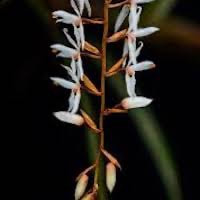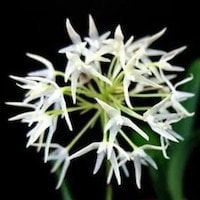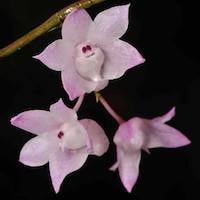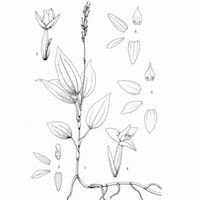MFL6- Men's Floral 6 - Love is in the air
|
Native Singaporean Orchid notes: Dendrobium Aureum
Dendrobium Aureum is featured in Floral 6 (Men) for a team-building perfume workshop. It's native to the Himalayas, Yunnan, Nepal, Bhutan, Assam, Sri Lanka, Indochina, Malaysia, and Indonesia. This orchid grows epiphytically with cane-like stems, often hanging or pendulous. It blooms in vibrant colors, with cultivated varieties showcasing diverse flower sizes and hues. Dendrobium hybrids are cherished for their striking floral displays and emit a pleasing fragrance blending fruity and violet notes.
|
Therapeutic Orchid notes:
|
Bulbophyllum laxiflorum Syn. Bulbophyllum radiatum
Bulbophyllum laxiflorum, also known as Bulbophyllum radiatum, is found in southeastern China, Myanmar, Thailand, and Peninsular Malaysia. It has Chinese names like Fusheshidou Lan (radiating stone bean orchid) and Yashe Lan (Duck tongue orchid). In Chinese medicine, it is valued for enriching Yin and benefiting the lungs by clearing phlegm and stopping haemoptysis (coughing up blood). It is also used to aid digestion, improve appetite, and relieve dry throat, known by various names like Shizao (Stone date), Shiduo (stone bean), Yanduo (stone bean), Jinduo (golden date), Shimi (Stone rice), and Duyiyanzhu (Single leaf cliff pearl) in medicinal contexts. |
|
Dendrobium aduncum Lindl. Syn D. scorianum W. W. Smith, D. faulhaberianum Schltr.
Dendrobium aduncum, also known by various Chinese names such as Gouzhuangshihu and Huangcaoshihu, thrives across regions from the Himalayan foothills to southern China, Myanmar, Thailand, and Vietnam. In Chinese herbal medicine, it is prized for its stem, known as Shihu, which is believed to boost vitality, reduce fever, aid digestion, and alleviate thirst. Widely utilized to support patients recovering from illness or experiencing poor appetite, this orchid underscores its medicinal significance across traditional practices in East and Southeast Asia. |
|
Hetaeria obliqua Blume
Hetaeria obliqua, also known as Xiebanfanchun Lan in Chinese and Pokok tumbak hutan in Malay, thrives in lowland forests across Sumatra, Thailand, Nicobar Islands, Peninsular Malaysia, and Borneo. Traditionally, its leaves were pounded into a poultice used to heal sores and infected wounds in Peninsular Malaysia. In Malaya, villagers combined these leaves with those of another orchid species, Thrixspermum pardale, to treat ulcers of the nose. |
Other scent note
Scentopia Library Reference ingredient
Passion Flower - Check details at Scentopia's scent library
Download the guided mediation that works best with this Orchid fragrance oil
| men_floral_essential_oil_orchi_00006.mp3 | |
| File Size: | 145521 kb |
| File Type: | mp3 |
Join Scentopia's wonderful orchid scent crafting, fragrance tour, bridal shower or corporate team building which includes perfume making onsite and offsite, beach activities and more. We also serve primary school learning journey, secondary students and pupil on industrial excursions. Know more about our orchids perfume bar or therapeutic orchid scents and other wellness aromas. Conatct Perfume workshop or book a scent crafting session here.




